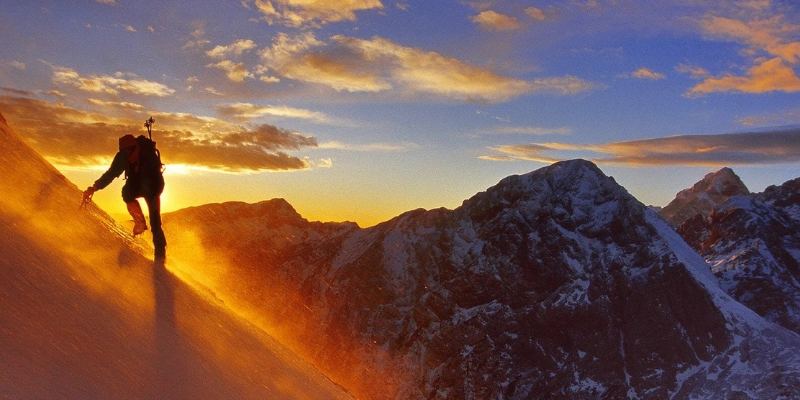The Allure of Mountains
There is something timeless and alluring about mountain climbing – an allure that draws adventurers from every walk of life to the world’s highest peaks. From the snow-capped Himalayas to the rugged Andes, these majestic landscapes offer not only breathtaking views but also intriguing personal challenges. But what is it that makes mountain climbing so alluring?
For many people, mountain climbing is more than a sport – it’s a calling. The sheer heights of a mountain represent a test of endurance, determination, and spirit. People are fascinated by the idea of pushing themselves to the limit, physically and mentally, to reach a goal that seems nearly impossible. Climbing is not just a journey upwards, but also inwards – a way to discover the resilience, grit, and courage within yourself.
The allure of mountain climbing lies partly in the extreme challenges it presents. Climbers face bone-chilling temperatures, unpredictable weather, oxygen-devoid air, and dangerous terrain. It requires exceptional physical fitness, meticulous planning, and unwavering mental toughness. Every step on the mountain is earned, and every obstacle overcome becomes a badge of honor.
But beyond the hardship, Mountain Climbing is also a story of survival and courage. History is filled with awe-inspiring accounts of climbers who defied the odds—caught in snowstorms, injured mid-climb, or stranded without help—yet somehow found the will to keep going. These stories not only reveal the cruelty of nature but also the incredible power of the human spirit. Whether it’s a solo climb or a team expedition, every journey up the mountain is filled with risks and rewards, heartbreak and triumph.
This article explores some of the most inspiring true stories in the world of Mountain Climbing—stories of survival against the harshest elements, of climbers who refused to give up, and of journeys that changed lives forever. Through these tales, we celebrate the core values that define every mountaineer: resilience, bravery, and the relentless pursuit of something bigger than yourself.
So lace up your boots, grab your gear, and get ready to be inspired by real-life mountaineering experiences that will leave you speechless.
Sir Edmund Hillary and Tenzing Norgay – First Ascent of Everest (1953)
In the history of mountain climbing, no achievement is more iconic than the first successful ascent of Mount Everest by Sir Edmund Hillary of New Zealand and Tenzing Norgay of Nepal on May 29, 1953. This monumental climb marked a turning point not only in Mountain Climbing but also in human exploration, symbolizing the limitless potential of courage, teamwork, and perseverance.
Before Hillary and Norgay, Everest – standing at an elevation of 29,032 feet (8,848 meters) – was a peak cloaked in myth and mystery. Dozens of climbers had tried and failed to climb the world’s tallest mountain, and many lost their lives in the attempt. The dangers of mountain climbing Everest were extreme: steep walls of snow, deadly avalanches, bone-chilling cold, and oxygen-deficient air near the summit, often referred to as the “death zone.”
What made the 1953 expedition extraordinary was not just the height or difficulty of the climb, but the context in which it was carried out. At the time, mountaineering equipment was primitive compared to today’s standards. Mountain climbers used heavy canvas tents, bulky oxygen tanks, and leather boots with limited insulation. There was no high-tech clothing, no GPS devices, and no weather satellites to forecast storms. Every step towards the summit was a gamble with nature.
Yet, despite these limitations, Sir Edmund Hillary and Tenzing Norgay worked together with unwavering focus. Mountain Climbing: The climbing route went from the Nepal side via the South Col, a path as brutal as it was beautiful. Battling harsh winds, deep snow, and temperatures that could cause instant frostbite, they kept moving forward. Their teamwork was remarkable – Hillary brought methodical determination, and Tenzing contributed his invaluable local knowledge and Mountain Climbing expertise. Together, they represented a blend of global ambition and regional resilience.
Reaching the summit of Everest was more than just an individual victory. In the world of Mountain Climbing, it was proof that the highest mountain on Earth could be climbed by human effort. The feat captured the imagination of millions and became a symbol of what humanity could achieve through cooperation, bravery, and determination.
The moment when Hillary and Norgay stood on top of the world was not just a victory over a Mountain climb– it was a victory over doubt and limitations. For generations of climbers who followed, their story remains a guiding light. Their success didn’t just open the door for more Mountain Climbing attempts on Everest; it inspired people to confront the ‘Everests’ in their lives, whatever they may be.
To this day, the legacy of Hillary and Norgay remains one of the greatest stories in Mountain Climbing history – a timeless reminder that with the right spirit, even the highest peaks can be conquered.
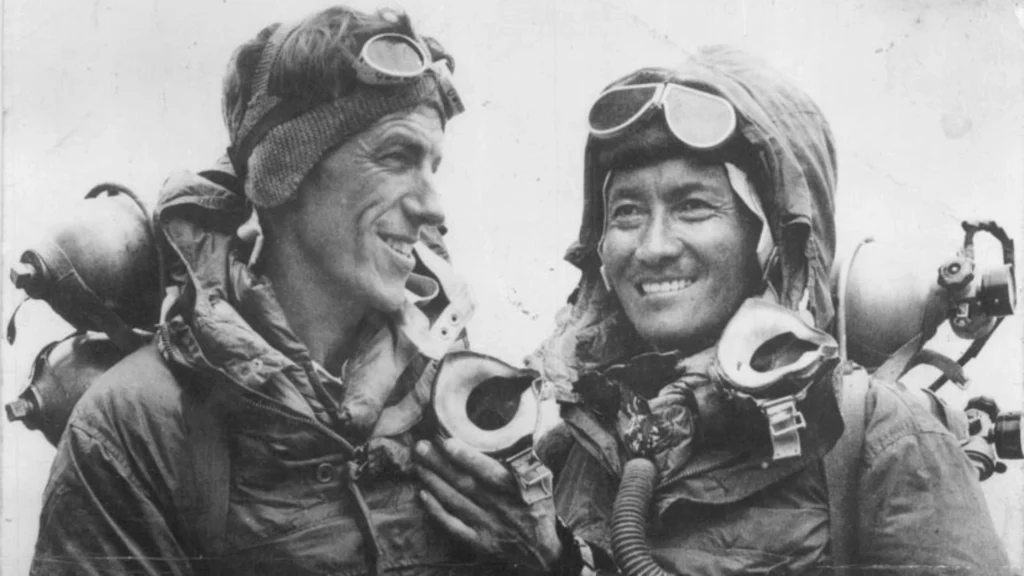
Aron Ralston – One-Handed Survival (Bluejohn Canyon, 2003)
Although Aron Ralston’s traumatic experience did not take place on a snow-capped peak, his story is deeply connected to the spirit of mountain climbing – an activity that requires courage, resilience, and a willingness to survive against all odds. In April 2003, Ralston, an experienced outdoorsman and avid Mountain climber, faced one of the most unimaginable challenges when a solo trip turned into a desperate battle for survival in Utah’s remote Bluejohn Canyon.
Ralston was hiking through the canyon’s narrow sandstone slots, which are part of the rugged desert terrain often explored by climbers and adventure seekers. Mountain Climbing Although it is not a high-altitude hiking destination, the canyons require similar survival skills and mental toughness. As he descended a crevasse, a massive 800-pound boulder slid and collided with the canyon wall, crushing his right arm. Mountain Climbing Alone and trapped, with no way to free himself, he was stranded in the unforgiving wilderness for five days.
With little food and water, no cell phone, and no way to call for help, Ralston had only his survival instincts and Mountain Climbing experience to guide him. As time went on, dehydration, cold nights, and mental fatigue took their toll. Still, the same mental toughness he developed during years of mountaineering helped him stay focused.
On the sixth day, realizing no one was coming to rescue him, Ralston made the unthinkable decision. Using a dull multi-tool, he amputated his trapped arm to escape. It was a decision born of the pure will to live — a moment that defines the raw, unfiltered essence of survival. After freeing himself, he descended a 65-foot ledge and hiked nearly seven miles before being rescued.
Ralston’s experience became a powerful symbol in the Mountain Climbing and outdoor adventure community Mountain Climbing. It wasn’t just about the physical act of having his arm amputated; it was about his clarity of thought, courage to act under pressure, and unwavering will to live. His story teaches Mountain Climbing that survival isn’t just about strength or skill — it’s about mindset, quick decision-making, and adaptability in the face of the unknown.
He later described his experience in his memoir “Between a Rock and a Hard Place,” which inspired the critically acclaimed film 127 Hours. Since then, Aron Ralston has continued climbing single-handed, proving that the spirit of mountaineering isn’t about having a perfect body – it’s about having an indomitable heart.
His journey may not have taken him to the top of Everest, but it did reach the highest peak of human endurance. Aron Ralston’s story is one of the most powerful real-life examples of survival, grit, and the never-give-up attitude that defines every great mountaineering tale.
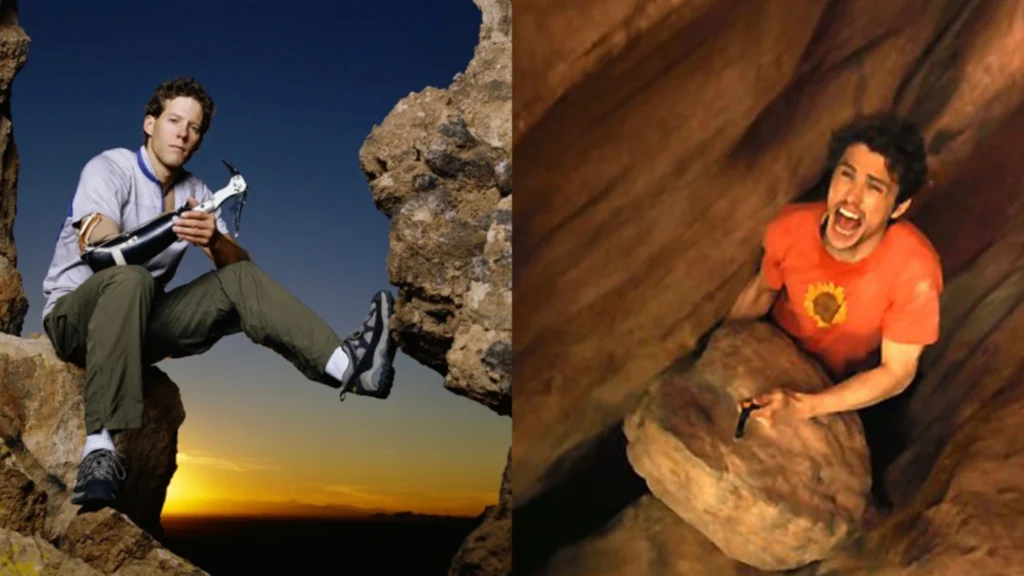
Reinhold Messner – First to Climb Everest Alone Without Oxygen
In the world of mountain climbing, few people are as respected and admired as Reinhold Messner. A pioneer, risk-taker, and tireless climber, Messner redefined the limits of human endurance. Mountain Climbing Among his many great feats, climbing Mount Everest alone without oxygen in 1980 is one of the most daring and extraordinary achievements in Mountain Climbing history.
Before Messner, climbers believed that reaching the top of Everest without bottled oxygen was nearly impossible. Mountain Climbing The extreme altitude above 8,000 meters, known as the “death zone,” provides so little oxygen that the human body begins to deteriorate even when resting. Combining this with the decision to climb completely alone – without a partner, support team, or radio – sounded like a death wish to many.
But for Messner, it was a test of pure survival, skill, and determination. Reinhold Messner climbed Everest alone in August 1980, during monsoon season, when Everest was notoriously unstable. He chose a new route up the mountain’s northern side, trekking alone across the vast Tibetan Plateau. Battling constantly changing weather, snowstorms, and deep crevasses, Messner pushed himself to his physical and mental limits. In a true mountaineering test of will, he battled hallucinations, extreme exhaustion, and the constant threat of altitude sickness without the crutch of supplemental oxygen.
What made this feat even more remarkable was his loneliness. In mountaineering, having a partner or team provides security and mental support, but Messner chose to tackle the world’s highest peak completely alone. There was no one to assist him, no one to motivate him, and no room for error. Every decision—when to rest, when to move forward, how to handle deteriorating conditions—he had to make alone.
Messner’s successful summit and safe descent stunned the world. Not only did he prove that the human body could survive in the death zone without oxygen, but he also showed that mountaineering at the highest level could be a deeply personal, solitary, and spiritual journey. His achievement shattered long-held beliefs and changed the way climbers approached high-altitude mountaineering.
During his career, Reinhold Messner completed all 14 of the world’s 8,000-meter peaks without supplemental oxygen – a record that makes him one of the greatest figures in mountaineering history. But it was his solo ascent of Everest that truly made him a legend.
Messner’s philosophy – that mountaineering should be about self-reliance, respect for nature, and pushing human limits – continues to inspire generations. His story is not just one of physical greatness, but also mental resilience, inner strength, and the power of vision.
Reinhold Messner remains a legendary figure in mountaineering, not just because of what he achieved, but because of how he achieved it – alone, without shortcuts, and with total commitment to the mountain and himself.
Junko Tabei – First Woman to Climb Everest (1975)
In the difficult and daring world of mountain climbing, Junko Tabei’s name stands as a powerful testament to determination, resilience, and unprecedented achievement. On May 16, 1975, she became the first woman in history to climb Mount Everest. Her story isn’t just about climbing the world’s highest peak – it’s about rising above cultural expectations, personal hardship, and nature’s most ruthless elements.
Born in Fukushima, Japan, in 1939, Junko Tabei fell in love with the mountains at a young age. But in a society where women were expected to stick to traditional roles, her passion for mountain climbing was considered unusual – even unacceptable. She was often told that climbing was “not a woman’s job,” but those words only fueled her ambition. Undeterred, she joined mountaineering clubs and later formed Japan’s first all-female mountaineering group in 1969, known as the Ladies Climbing Club.
Her journey to Everest began not with fame or sponsorship, but with intense preparation and resourcefulness. The team raised the money themselves, and many of them had to sew their gear. When Junko led the first all-female international expedition to Mount Everest, it was more than just a physical challenge – it was a cultural revolution in mountaineering.
The expedition faced almost tragic circumstances. At an altitude of about 6,300 meters, their camp was hit by a sudden avalanche, burying Junko and several others under snow and debris. She fainted and had to be dug out. Most climbers would have turned back after such a terrifying experience. But Junko, although injured and weak, refused to give up. She recovered quickly, motivated by her unwavering goal, and persevered through high winds, blizzards, and a death zone of oxygen deprivation.
On May 16, 1975, Junko Tabei reached the summit of Everest. Her victory wasn’t just a personal milestone—it was a moment that forever changed the perception of women in extreme sports. In the male-dominated world of mountaineering, she blazed a trail and proved that strength, endurance, and leadership had no gender.
But Junko’s journey didn’t stop at Everest. She became the first woman to complete the Seven Summits, climbing the highest peak on every continent. Her life wasn’t just about reaching summits; it was about inspiring others to find their summits. She dedicated her later years to environmental activism, particularly advocating for sustainable mountaineering and protecting fragile alpine ecosystems.
What makes Junko Tabei’s legacy so enduring is her humility. Despite her historic achievements, she often said, “I never felt like a special person.” Yet, through quiet perseverance and bold action, she inspired generations of climbers – especially women – to break barriers and fearlessly pursue their passions.
In the grand narrative of mountaineering, Junko Tabei’s story is not just one of height, but one of growth. Her ascent of Everest was more than just a climb; it was a declaration that no mountain, literal or social, is so high that it cannot be conquered with courage and commitment.
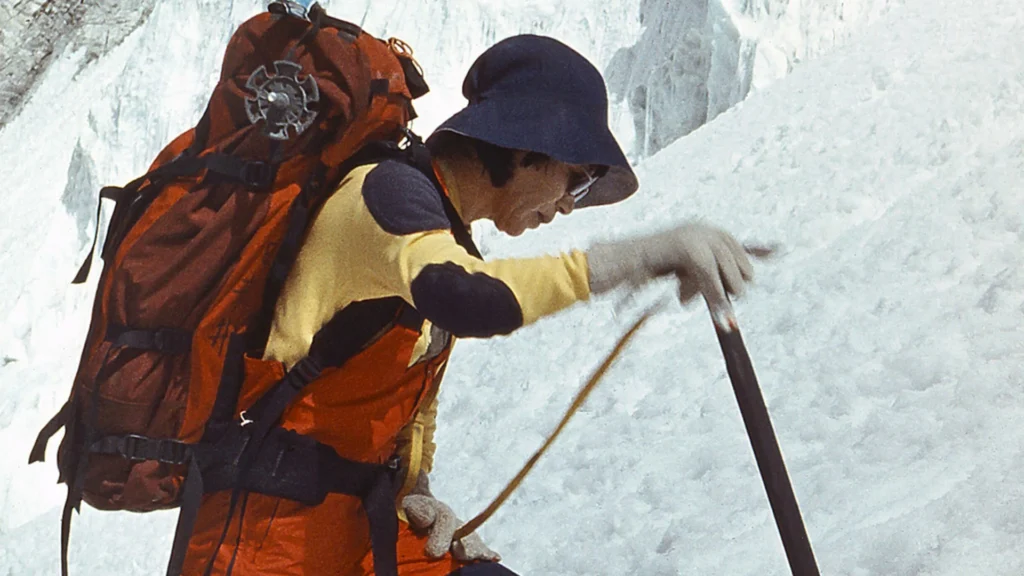
Nirmal “Nims” Purja – 14 Peaks in Less Than 7 Months (2019)
In the modern age of extreme adventure, few accomplishments in mountaineering are as staggering as Nirmal “Nims” Purja’s conquest of all 14 of the world’s 8,000-meter peaks in just 6 months and 6 days. In 2019, the Nepali climber – a former Gurkha and special forces soldier – did what was once thought to be impossible: he redefined the limits of speed, endurance, and strategy in high-altitude mountaineering, rocking the global mountaineering community.
The “8000ers” are the 14 mountains on Earth that rise above 8,000 meters (26,247 feet) – each one is arduous, challenging, and often deadly for climbers. Before Nims arrived, the record for climbing all 14 peaks stood for more than 7 years. Nims accomplished this feat in just 189 days, in what he dubbed “Project Possible” – a bold mission not just to break records but to inspire a new generation of climbers, especially from his home country of Nepal.
From Annapurna to Everest, K2 to Shishapangma, Purja traversed the world’s highest and most dangerous mountains with breathtaking speed and military precision. What set his mountaineering approach apart was his unique combination of superb fitness, tactical planning, and a firm belief in the power of teamwork. He didn’t do it alone – he worked with a handpicked team of fellow Nepali climbers, bringing recognition to the often overlooked Sherpas who play a vital role in almost every Himalayan expedition.
Each climb brought with it some risk: avalanches, blizzards, deadly crevasses, and life-threatening altitude sickness. Yet Nims kept pushing forward, often climbing multiple peaks in just a few days. At times, he even rescued other climbers, proving that his mission was not just about speed, but about service to the mountaineering community. His leadership and calm in chaotic situations reflected both his military training and his love of the mountains.
One of the most iconic images of his journey was taken on the traffic-jammed summit of Everest. That viral photo not only raised questions about overcrowding, but also highlighted how far mountaineering has come – and how much further it can go with proper planning and respect for nature.
Nims’ achievement not only broke a record; it changed the definition of what’s possible in mountaineering. His blend of discipline, technique, logistics, and sheer willpower modernized a traditionally slow, calculated sport. He showed that with determination, innovation, and heart, new standards can be set, and new stories can be written – even in the thin air above 8,000 meters.
After completing Project Possible, Purja starred in the acclaimed documentary “14 Peaks: Nothing Is Impossible,” which drew global attention to his journey and the strength of Nepali climbers. Today, he continues to inspire climbers around the world — not just with his physical feats, but with his message: Mountains are for everyone, and every summit begins with the belief that it can be done.
In the timeline of mountaineering, Nirmal “Nims” Purja’s 2019 record is a bold exclamation mark — a moment when boundaries were broken and a new era of mountaineering truly began.

The 1996 Everest Disaster – Stories of Tragedy and Heroism
In the history of mountaineering, there are few events as horrific, dramatic, and instructive as the 1996 Everest disaster. What began as a routine attempt to climb the world’s highest peak ended in chaos, taking the lives of eight climbers and forever changing the way the mountaineering world views decision-making, risk, and survival at high altitudes. This tragic event was brought to public attention through Jon Krakauer’s gripping account, Into Thin Air – a first-hand account of one of mountaineering’s darkest days.
During the spring climbing season in May 1996, several commercial expeditions gathered at Everest Base Camp with a single goal: to reach the summit. These expeditions included experienced guides such as Rob Hall of Adventure Consultants and Scott Fischer of Mountain Madness, who were respected figures in the mountaineering community. With clients ranging from experienced trekkers to ambitious amateurs, the climb was planned for May 10 – a date on which favorable weather was expected.
But as climbers climbed into the notorious “death zone” above 8,000 meters, things began to deteriorate. Delays at roadblocks near the Hillary Step, miscommunication, and non-adherence to strict turnaround times kept many climbers on the mountain until late afternoon. Then, as night fell, a massive blizzard hit Everest’s upper slopes, reducing visibility to almost zero and temperatures to dangerously low.
The storm turned the descent into a nightmare. Rob Hall became stranded on the mountain while trying to guide a client. Despite radio contact and appeals from team members to descend, Hall refused to leave the client behind. He eventually died near the summit – one of many heartbreaking deaths that day. Scott Fischer, weakened by illness and exhaustion, also died in the storm. His death, along with others, underscored how vulnerable even the most experienced mountaineering professionals are when nature turns hostile.
Yet there were incredible acts of heroism amid the tragedy. Guide Anatoly Boukreev risked his life by rappelling down without supplemental oxygen to rescue climbers stranded during the storm. Beck Weathers, who was twice presumed dead due to severe frostbite and unconsciousness, miraculously regained consciousness and made it back to camp. His survival became one of the most amazing mountaineering stories of all time.
The 1996 Everest disaster served as a grim warning. It exposed the risks of commercializing mountaineering, where less experienced clients were guided by guides under extreme pressure to succeed. It highlighted the importance of tough decision-making, proper acclimatization, and respect for the power of the mountain. In the aftermath of the disaster, many changes were implemented, including improved communication systems, stricter summit schedules, and increased scrutiny of climbers’ readiness.
Kracauer’s Into Thin Air, both a personal memoir and a groundbreaking journalistic investigation, exposed the psychological impact of high-altitude climbing and the spur-of-the-moment decisions that mean life or death. It also forced a global discussion about the ethics and safety of taking paying clients up dangerous peaks.
Today, the 1996 disaster remains an important chapter in mountaineering history—not only because of the lives lost, but also because of the invaluable lessons learned. It reminds us that mountains are beautiful and majestic, but unforgiving to those who are unprepared or overconfident. In a sport that demands humility, the events of Everest in 1996 continue to resonate deeply with climbers and adventurers around the world.
In the field of mountaineering, where ambition often walks a fine line with danger, the 1996 Everest disaster stands as both a tragedy and a powerful teacher, one that resonates in every expedition that has followed.
What we learn from these stories
In the exciting world of mountain climbing, stories of triumph, tragedy, and survival are more than just tales of adventure—they are mirrors reflecting the deepest aspects of human nature. From Junko Tabei’s daring climb to Aron Ralston’s unimaginable endurance and Nirmal Purja’s extraordinary speed, each story contains powerful lessons that extend beyond peaks and crevices. They speak to our everyday struggles, decisions, and dreams. Mountaineering teaches us not only to survive against the odds but to live with purpose, resilience, and humility.
One of the most obvious lessons is endurance—the ability to keep going even when everything around you says to stop. In mountaineering, this endurance is physical, mental, and emotional. Whether it was Reinhold Messner climbing Everest alone without oxygen, or the climbers battling fierce blizzards during the 1996 Everest disaster, the one thing they have in common is that they don’t give up. Their stories remind us that even when life gets cruel, persistence can carry us through.
Very closely linked to perseverance is grit – that raw, unwavering determination to face discomfort, fear, and pain in pursuit of something greater. Mountaineering requires intense mental concentration, especially in high-risk environments. Climbers like Nims Purja demonstrate this grit by maintaining rigorous discipline during months of dangerous climbing. In daily life, this kind of determination can help us cope with setbacks, keep moving toward goals, and never lose sight of what we believe in.
Adaptability is another essential quality that runs through these mountaineering stories. Mountains are unpredictable – the weather changes, avalanches occur, and trails become deadly. The best climbers survive because they adapt. Aron Ralston’s decision to cut off his arm to avoid a rockslide in Bluejohn Canyon is a heartbreaking but inspiring example of the human mind’s ability to make life-saving choices in a crisis. It reminds us that life will not always go according to plan, and resilience often becomes our greatest strength.
Yet, mountains also teach humility. No matter how strong, skilled, or equipped a climber is, nature always has the final word. The tragic loss of climbers in the 1996 Everest disaster is a sobering reminder that no one is invincible. In mountaineering, the summit is not always guaranteed. Hence the saying of experienced mountaineers: “Getting to the top is optional, getting down is mandatory.” As in life, too, we must know when to press forward and when to retreat, respecting forces beyond our control.
Perhaps the most profound lesson from these mountaineering stories is that not every climb is about the summit. The journey itself – building friendships, winning internal battles, awe of nature, and quiet moments of contemplation – often matters more than the summit. Many climbers return without reaching the top, yet they take home something even more valuable: self-discovery.
In our daily lives, we all face our own “mountains” – personal challenges, ambitions, or failures. Mountaineering stories provide us with a guideline: stay determined, adapt when needed, respect the process, and enjoy the climb, even if you don’t reach the summit. Whether you’re seeking a career, recovering from hardship, or striving for personal growth, the spirit of the mountaineer lives on in you.
In the end, mountaineering isn’t just about conquering peaks – it’s about understanding the depths of the human spirit. These stories are not just an inspiration for adventurers but also a guide for anyone going through life’s ups and downs.
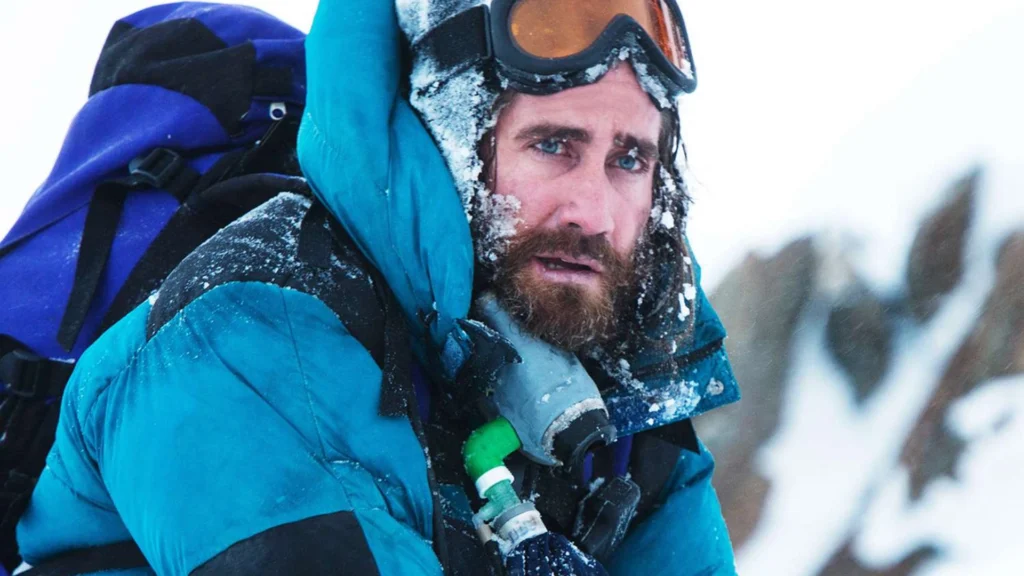
Conclusion: Which peak do you want to conquer?
The world of mountain climbing doesn’t just offer breathtaking views and heart-pounding adventures – it gives us some of the most powerful stories of courage, survival, and the human spirit. From Sir Edmund Hillary and Tenzing Norgay’s historic Everest climb to Junko Tabei’s quiet rebellion against gender norms, from Aron Ralston’s unimaginable survival in the face of death to Nirmal “Nims” Purja’s world-record-breaking quest – these stories go far beyond the snow and rock of the mountains.
Each of these climbers teaches us something extraordinary. mountain climbing. Their journey is not just about reaching the summit, but about discovering who they are in the face of adversity. Mountaineering pushes human beings to their limits – physically, mentally, emotionally – and in doing so, reveals strengths we often don’t know we have. Whether it’s battling freezing temperatures, traversing life-threatening terrain, or self-doubt, these climbers demonstrate what it means to endure and triumph.
These stories also teach us that mountain climbing, while extreme, reflects everyday life. The summit can be a dream you’re chasing, a challenge you’re facing, or a fear you’re trying to conquer. Not every peak is made of ice and rock – some are made of confidence, perseverance, and the courage to keep going. Whether you’re climbing Mount Everest or going through a personal struggle, the lessons of patience, adaptability, and humility apply.
Perhaps the most inspiring part of Mountain Climbing is the reminder that greatness isn’t always about being the fastest or the strongest – it’s about having the heart to try. It’s about standing at the base of something huge, uncertain, and risky, and taking the first step anyway. It’s a lesson we can all adopt in our own lives.
So ask yourself: What peak do you want to conquer? Is it a goal you’ve been putting off? A fear you need to face? A route that scares you but excites you at the same time? Let these climbers inspire you to keep climbing, no matter how difficult the journey.
What climbing story resonates with you the most? Share your thoughts or your experience in the comments! Whether you climbed a real mountain or a metaphorical one, your story matters. Just like climbing a mountain, every step counts—and every climber has a story worth telling.
Read about Sports with Duniya Sports

